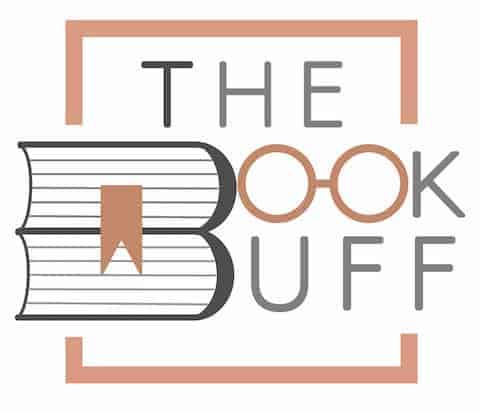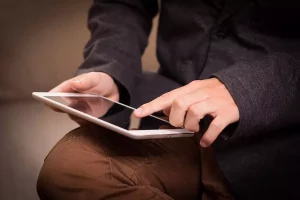Is Reading Bad for Your Eyes? [Here’s a Complete Truth!]
Disclosure: This post may contain affiliate links. – meaning I may get a commission if you decide to purchase through my links, at no additional cost to you.
Is reading bad for your eyes? This is a question often asked by readers, especially frequent readers. Whether you are reading printed books, or prefer an e-reader, tablet, or smartphone, the question is always the same – am I damaging my eyes by reading too much?
In general, reading alone rarely leads to permanent eye damage. However, reading in an incorrect posture, low light, moving vehicle, or on a digital device can strain your eyes. This can lead to dry eyes and headaches. Visit your ophthalmologist for an eye check-up every 6 months if you read often.
In this article, we’ll discuss some of the frequent questions asked concerning the influence of specific reading aspects on the eyes.
As the reading of books on digital devices has become an integral part of the reading scene we also discuss their influence on the eyes. We’ll also suggest tips on how to avoid eye strain when reading.
Can Reading Ruin Your Eyesight?
The statement is often made that reading can ruin your eyes. But although reading, like any other task that requires intense focusing, can put a strain on your eyes it is a myth that reading always harms your eyes permanently.
It may, however, lead to other symptoms, like headaches or fatigue and it can give you some red eyes.
Studies have shown that one of the main reasons we might develop temporarily sight-related issues when reading is because we rarely blink while reading. This deprives our eyes of rest and muscle movement.
Fortunately, for all these temporary eye strain effects that reading may have on our eyes, there are ways to reduce and even prevent the effects.
However, we have to mention that it is possible that certain external aspects like constant exposure to direct sunlight or HEV light when reading might ruin your eyesight to a certain extent. But if you are aware of the possible damage, you can avoid situations where your eyes might be damaged.

Is Reading Too Much Bad For Your Eyes?
Some people accept that it might be true that “normal” reading will not damage their eyes, but are still concerned that their eyes could be damaged if they read too much.
However, they don’t have to worry about it. Although they are correct that extensive or prolonged reading can cause eye strain, there is no evidence that it will damage or wear out a person’s eyes permanently.
Thus, when you notice that your eyes are burning or are becoming dry whilst reading, relax your eyes by focussing on something further away and blink your eyes a few times.
Is Reading in Dark Harmful for your Eyesight?
When you try to read in a dark environment, your pupils dilate to allow more light to enter the eyes. The eyes’ rods and cones must then temporarily work harder than usual to transform what you see into information to be processed by your brain.
In a dark reading environment, your eyes also have less contrast between the dark letters and the white page. Your eyes have to work harder to distinguish the text you are reading. This overworking of the eyes can lead to eye strain.
All this extra strain can cause headaches, itchy eyes, and blurred vision, but will not cause permanent damage to your eyes.
Is Reading in Dark Using Flashlight OK?
Experts commonly believe that reading in the dark using flashlights won’t cause lasting damage to your eyes. But as it is not the ideal way of providing light to read by, the problem is actually the side effects you might experience.
A torch normally doesn’t provide enough light for reading, you will almost certainly get a headache.
You need at least 450 lumens (40 watts) light to read comfortably. Few torches deliver this light intensity.
Does Reading in Dim Light Affect Your Eyesight?
Reading in dim light can cause eye strain but studies have confirmed that this will not permanently affect your eyesight.
If you are reading a book in a dimly lit area, your light source should ideally be positioned behind you so that the page is being lit up to reduce or prevent excessive eye strain.
There are also special lights available that you can attach to your book. This helps to reduce the amount of strain when you are reading in a poorly lit environment. For reading in bed, a reading lamp next to your bed is a good solution.
As mentioned earlier, you need at least 450 lumens (40 watts) light to read comfortably in dim light. But you must remember that this minimum light is for children and young adults. You will need more light over the years as your eyes get older.
Does Reading Small Text Damage Your Eyes?
Reading small print can temporarily strain your eyes, but as with other reading issues causing eye strain, there is no evidence that doing so will damage your eyes permanently.
However, if you have poor eyesight because of illness or “normal” eyesight degrading over years, you can reduce the eye strain if you read books with a larger print.
Is Reading on a Tablet Bad for Your Eyes?
Although reading on a tablet also doesn’t damage your vision permanently, it might lead to unpleasant side effects like headaches as a result of eye strain.
When you read on a tablet it is good to be aware of how you can reduce eye strain. This is especially needed if you read more than 2 hours a day on your tablet as prolonged screen-time can result in digital eye strain, also known as Computer Vision Syndrome.
Computer Vision Syndrome
The most common symptoms of Computer Vision Syndrome include headaches, blurred vision and dry eyes. If you don’t rest your eyes now and then, the symptoms will not disappear. It is also not uncommon to experience neck and shoulder pain as well.
To alleviate the digital eye strain causing these symptoms, follow the 20-20-20 rule. According to this rule, you take a 20-second break to view something at least 20 feet away for every 20 minutes you are reading on your tablet.
Keep the Screen Clean
The first step to remove environmental factors that can cause eyesight issues when reading on your tablet is to keep your screen clean at all times. Clean it regularly to remove any dust, smudges, and fingerprints that have accumulated over time.
The fewer things there are to obscure your screen’s clarity, the less eye strain will be experienced.
Position the Screen Properly
To reduce eye strain, ensure that the top of the tablet’s screen is positioned directly in line with your eye level. The distance between your eyes and the screen should be at least 18 inches, and not farther than 30.
The best position to hold your tablet is tilted backward at about 10-15 degrees. Never hold your screen at a 90-degree angle or tilted forward. By tilting your tablet correctly you also remove any glare that may come from your overhead lights.
Adjust the Screen Brightness
When you read on your tablet in a room with no natural light or very dim artificial light with the screen’s brightness at its maximum, your eyes experience a lot of stress because of the huge difference in light contrast between the screen and the environment.
To prevent this kind of eye stress set the screen brightness to a level that’s similar to that of your environment.
Also, ensure that you don’t have a direct light shining onto your screen, because the glare can strain your eyes. Direct sunlight on the tablet’s screen has the same effect.
Is Reading on a Tablet in Dark Bad for Your Eyes?
To reduce eye stress it is recommended that the brightness level of the tablet’s screen and the environment should be more or less the same. When you read in a dark room your eyes don’t have any other light source to compare the screen’s brightness with.
So, whatever the brightness of the screen, it is more than the environment. This sharp contrast lets your eyes experience a lot of stress.
And as with most eyesight issues when reading, your eyes will not be damaged permanently, but the side effects like headaches and dry, irritated eyes will bother you while you are reading. So it is not recommended to read in a totally dark space.
Does Reading on a Kindle Harm Your Eyes?
According to the results of a survey carried out by Pew Research Centre’s Internet & American Life Project, 1 in 5 people in the United States had read an e-book and that owners of e-reader devices read 8 books per year more than people who didn’t have one.
Of all the e-reader devices, Kindle was at the time of the survey the most popular, with a 62% market share.
Thus, when discussing the effect reading has on your eyes, reading on a Kindle has to be taken into account. One of the reasons is that two important recommendations when reading a printed book and viewing a movie on television are in many instances ignored when reading on your Kindle.
The recommendation when reading a printed book is not to read in the dark or very dim light. And the recommendation when viewing a movie is not to sit too close to the screen.
When reading your Kindle you normally keep the bright screen close to your eyes and you are frequently reading your Kindle in dim light or even in the dark at night.
How Does eReader, Including a Kindle Work?
Before we can have a look at the question of whether reading on Kindle affects your eyes, we have to look at the technology behind e-readers.
Generally speaking, there are two main display technologies used in e-readers and smartphones, namely
- liquid crystal display (LCD), and
- electronic ink (E-ink).
LCD screens emit light through the display towards your eyes, but with E-ink, no backlight is used. Devices using E-ink technology mimic an ink-on-paper appearance. Studies have shown that this technology generally reduces eye strain.
Kindle is one of the devices that use E-ink display technology.
Different Influences on Eyes by Printed Books, LCD- and E-ink-Readers
A small study in 2013 compared visual fatigue as a result of prolonged reading a printed book, reading with an LCD e-reader, and reading with an E-ink Kindle. They’ve found that reading on the E-ink (Kindle Paperwhite) and the reading of paper books cause lower visual fatigue than any of the LCD e-readers.
Typical Temporarily Visual Fatigue
Although reading on a Kindle will not harm your eyes permanently, overuse of the Kindle can cause visual fatigue. Any of the following, or a combination of them, may occur:
- Pain around the eyes,
- Fatigue,
- blurred vision, and
- headaches.
When any of these symptoms appear take a critical look at how you hold your Kindle and the light environment you are reading in. Also, if you’ve not implemented the 20-20-20 rule, get into the habit of focusing every 20 minutes on an object at least 20 feet away for 20 seconds.
Is Reading on a Phone Harmful For Eyes?
According to many ophthalmologists, this is the one way of reading that can potentially damage your eyes permanently. If you read on your mobile phone, the light coming out of that is blue-violet, also called HEV light.
HEV light is part of visible light that has the shortest wavelengths. It’s believed that HEV light can penetrate the cornea and lens. it can damage the retina and increase the risk of cataracts, and age-related visual degeneration.
How to Protect Your Eyes when Reading on a Phone
Apart from the 20-20-20 rule that is good to adhere to, you can take the following steps to protect your eyes:
- Maintain a comfortable distance between your phone and your eyes. The greater the distance between your phone and your eyes, the less eye strain it is likely to cause.
- Try to keep the screen’s brightness low.
- Get an eye exam regularly to detect possible eye damage early.
Is Reading in a Moving Vehicle Bad for Your Eyesight?
Reading in a moving vehicle is not bad for your eyesight but it can cause other problems. It can induce vertigo or motion sickness in some people.
The problem is that your vision is fixed on an object that is not moving, while your body and inner ear perceive motion. The best cure is to regularly look up to regain your visual perspective of motion.
So, if you are not affected by vertigo you can read in a moving vehicle without any eyesight implications unless you hold your book or electronic device incorrectly and the light in the vehicle is not reader-friendly.
Is it Bad for your Eyes to Read While Lying Down?

You are in an “abnormal” reading position if you are lying down to read. When you read lying down, your eyes focus upwards. This angle might cause eyestrain if it happens frequently over some time.
This leads to a condition called asthenopia that causes symptoms such as fatigue, discomfort in or around the eyes, blurred vision, headache, and sometimes double vision as well.
Reading while lying causes a strain on the muscles around the eyes. The strain is felt by the extraocular muscles that affect eye movement.
Fortunately, the eye strain caused by reading when lying down will not cause permanent damage.
Is Walking and Reading Bad for Your Eyes?
If you walk in the shadows when you’re reading, the only effect on your eyes will be caused by a strange angle that you might hold your book.
Always, even when walking and reading try to keep the inclination of the book and the distance from your eyes as when you would have been sitting down to read.
Reading in direct sunlight, however, can be dangerous. As with any other activity that is done in direct sunlight, reading in sunlight can cause UV damage. When you walk and read in direct sunlight be sure to wear UV-blocking sunglasses and if possible, a wide-brimmed hat.
How to Avoid Eye Strain While Reading? 5 Tips!
How can you prevent putting excess strain on your eyes when reading? Here are a few tips to help:
- When reading, have a light source behind you so that light is being directed onto the page. If you are reading at a desk, use a lamp with a shade to prevent the light from shining into your eyes.
- Read large-print books if words appear too small on the page.
- Take regular breaks. The best way to take your breaks is with the 20-20-20 rule: With this rule you look away from your book every 20 minutes, and focus on something 20 feet away for at least 20 seconds. You can also walk around for a while and give your eyes a rest.
- Blink often to moisten your eyes.
- Match the screen’s brightness with the light intensity of the environment if you are using an e-Reader and never read in the dark.

About the Author
Akansha is a former business journalist and a seasoned communications professional. She is the founder of TheBookBuff, an avid storyteller, and a lifelong biblophile! Check out her profile page to know more about Akansha.

![Is the Kindle Oasis Worth Buying? [User’s Full Review!]](https://thebookbuff.com/wp-content/uploads/2023/08/Kindle-Oasis-V2-300x225.jpeg)


![How to Read Kindle Books Without Kindle? [Full Guide!]](https://thebookbuff.com/wp-content/uploads/2021/11/young-man-reading-ebook-with-ereader-on-couch-2021-08-29-04-05-36-utc-optimized-300x203.webp)
![Kindle vs. iPad: Which is Better for Reading in 2023? [Guide!]](https://thebookbuff.com/wp-content/uploads/2022/08/reading-on-iPad-300x223.webp)
![How to Transfer Books from Kindle to Computer? [And Back!]](https://thebookbuff.com/wp-content/uploads/2021/11/pexels-adrienne-andersen-2237795-300x200.webp)